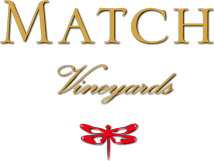On Wednesday (6/16/10) we bottled 314 cases of our 2008 Butterdragon Hill Cabernet Sauvignon. We used the mobile bottling line at Bin to Bottle in Napa. The wine is tasting great and will be released next Spring.
A few details:
- 600 x six packs of 750ml
- 6 x six packs of 1.5L mags
- 7.5 x twelve packs of 375ml
- ABV 14.6°
- EK-250 filtration
Sorry for the poor photo quality. My Blackberry had trouble with the rapidly moving bottles.
June 4, 2010 – One hundred Napa Valley vintners, each with a barrel filled with a future release, lined the caves at Francis Ford Coppola’s Rubicon Estate. It was really cold in the cave when I arrived — colder than usual. Summer had finally begun in the Napa Valley and the difference in temperatures between the outside upper 80’s and the cave’s chill caused us all to shiver. But it was about to heat up. Soon thousands of guests were tasting their way through the caves.
We were all there to raise money for Auction Napa Valley, one of the largest charity wine auctions in the world. Since it’s inception in 1981, Auction Napa Valley, conducted by the Napa Valley Vintners, has given away over $90 million to local charities. In the Barrel Auction portion, guests bid on a case of a future release sampled from the barrel. The top ten bidders get a case and the highest bidder also receives an autographed, engraved barrel head to commemorate their auction win. Running concurrently outside of the the Barrel Auction, Marketplace Napa Valley offered wine tasting and wonderful food bites from some of the greatest Napa restaurants and chefs. The day was also the finale of the E-Auction and computers were set up for last minute bids.
This is my favorite day of the Auction. It’s the biggest with more guests, more wines, more food, more everything. It’s also the most affordable event at $250 per person instead of the $2500 ticket for the 4 day package. You see a wider-cross section of folks. Not to knock the special dinners and the live auction portion — they’re great and actually raise the most money — but I’m a little more at ease chatting about our wines and how they’re made with folks in the cave than in being at a black tie affair and watching someone pay $200,000 for a 6 liter of Screaming Eagle.
From a bidder standpoint, I screwed up my strategy again this year. I always kick myself for not tasting and bidding early. The big names — the latest critics’ darlings and the old standards — always go for a pretty big chunk of change (~ $4k/case). The crowd flocks to the best known wines so you”re not going to get a deal on Shafer Hillside Select, but you can often get some (even better) wines at perhaps less than retail if you bid fairly early. The opening bid is $175 with $50 minimum bid increments. A $175 bid won’t last, but $600 may squeeze in somewhere in the top 10 and get you a really nice case of wine, possibly at less than retail, and definitely all going to a good cause.
Most wineries were offering their 2008 vintage with a good portion of the wines either Cabernet Sauvignon or Bordeaux blends. This was my first chance to take a look at this Napa vintage for anything other than our own wines. After tasting so many barrels, I would summarize that 2008 will be a very good vintage though perhaps not quite as consistently great across the board as 2007 was. As a consumer, you’ll probably want to be selective, trusting Cellartracker/Grapestories, professional reviews, and friends’ recommendations to find the very best. This differs from the 2007 vintage when you could practically select great Napa wines using the dart board approach. Many of the 08’s had really nice attacks and upfront fruit profiles yet did not have very complete finishes, some even being a bit thin in the middle right now. I also noted some pretty rough tannins on some Cabs. I predict that they will flesh out and the tannins will soften but will need some cellar age for that to happen. It will not be an early-drinking vintage. Another common thread for the vintage is the production levels are going to be way down, primarily due to a much smaller harvest in 2008.
Although I certainly didn’t have the chance to try as many as I would have liked — I was there to “work” after all — I did try some. Of those I tried, the following wines are the ones I would recommend. The number of “*” indicates the relative strength of the recommendation.
- Alpha Omega 2008 Red Table Wine
- Blackbird Vineyards 2008 Bordeaux Blend
- Crocker & Starr 2008 Cabernet Sauvignon, Crocker Estate Vineyard *
- Jones Family 2008 Cabernet Sauvignon ***
- Joseph Phelps 2008 Bordeaux Blend, Insignia Auction Reserve **
- Frazier Winery 2008 Cabernet Sauvignon, Estate **
- Madonna Estate 2009 Pinot Noir, Due Ragazze Reserve
- Merryvale Vineyards 2008 Bordeaux Blend, Profile **
- Mi Sueño 2008 Cabernet Sauvignon, Selección Herrera **
- Nickel & Nickel 2009 Cabernet Sauvigon, C.C. Ranch *
- O’Shaughnessy Estate 2008 Cabernet Sauvignon ***
- Paraduxx 2007 Blend
- Parallel 2008 Cabernet Sauvignon, Estate
- Rocca Family 2008 Cabernet Sauvignon, Grigsby Vineyard
- Rombauer 2008 Cabernet Sauvignon, Proprietors Selection *
- Round Pond 2008 Cabernet Sauvignon *
- Roy Estate 2008 Cabernet Sauvignon, Charles – A Tribute *
- Shafer 2008 Cabernet Sauvignon, Hillside Select **
- Stag’s Leap Wine Cellars 2008 Cabernet Sauvignon
- Terra Valentine 2009 Cabernet Sauvigon, Wurtele Vineyard *
This was our first year to have a barrel in the auction. We poured our 2008 Match Butterdragon Hill Cabernet Sauvignon. I’m very proud of how the wine is showing with lovely, complex fruit, significant spice, cooking herbs, sweet tannins, and a full, rich mouthfeel. We’ll be bottling 350 cases of this wine in just two weeks. Of course, it’s impossible for me to be totally objective when evaluating our own wine — sometimes I’m even harder on our wines — but I can honestly say that the only wine I tried that day that I would rather drink than my own was perhaps the 2008 Jones Family. It was phenomenal.
News Flash: 2010 Auction Napa Valley raised $8.5 million for Napa Valley charities!
And a final note… Someone needs to invent a tasteless throat lozenge because after trying to speak over the din inside that cave for a few hours, I started losing my voice and coughing. Hall’s Menth0-lyptus isn’t conducive to wine tasting.
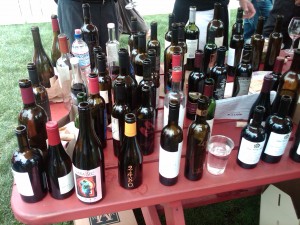 Wine Spectator magazine sponsors a magnum party at a local restaurant each year as the first big soiree of Auction Napa Valley. This event is by invitation only. Don’t ask me how to get a ticket. I’ve never gotten one.
Wine Spectator magazine sponsors a magnum party at a local restaurant each year as the first big soiree of Auction Napa Valley. This event is by invitation only. Don’t ask me how to get a ticket. I’ve never gotten one.
However, there’s great fun to be had at the unofficial, informal kickoff party — the 1/2 bottle party at Gott’s Roadside (until recently called Taylor’s Refresher). Open to the public, folks bring a 1/2 bottle to share, order (and pay for) their own food, and then make merry on the lawn at Taylor’s [damn] Gott’s. Glasses are provided if you get there early enough. (They tend to run out.) This year’s party was yesterday at noon.
Pictured is the picnic table early in the party. A lot more bottles showed up. You’re only supposed to bring a 1/2 bottle but some folks cheat just a bit. Arkenstone winery, apparently without a split, placed a 750ml on the table but labeled it “Half Bottle” just to be safe.
I didn’t write tasting notes and certainly didn’t get around to trying even a large percentage of the wines, but here’s a few that I tried and liked:
- 2008 Arkenstone Sauvignon Blanc Howell Mountain – tart, crisp, light, pineapple
- 2006 Ladera Cabernet Sauvignon Napa Valley – cherry, tar, tight and tannic
- 2007 Gemstone Facets – round, cassis, dark chocolate
- 2007 Fantesca Cabernet Sauvignon – bright cherry, lighter and more nimble than the Facets
- 2007 Abiouness Pinot Noir Carneros Stanly Ranch – charming, sweet round mouthfilling flavors
- 2008 Spellbound Chardonnay – California styled but not huge
- 2006 De La Guerra Chardonnay – full throttle, buttery, Cali Chard
- 2006 Spring Mountain Cabernet Sauvignon Napa Valley – elegant currant and pine, perhaps the best wine I tried this day
I brought both of our 07’s, Butterdragon Hill and unreleased Baconbrook, in 375ml format. Although I didn’t try them today, I’m told they were good. 😉
 In 2010 the Napa Valley Vintners celebrate the 30th anniversary of Auction Napa Valley–still the world’s most successful charity wine auction. To date the NVV has given $90 million to the Napa Valley community!
In 2010 the Napa Valley Vintners celebrate the 30th anniversary of Auction Napa Valley–still the world’s most successful charity wine auction. To date the NVV has given $90 million to the Napa Valley community!
Even if you are unable to join us personally in the Valley this year, you can still participate in helping raise money for some wonderful charities and win some fantastic, one-of-a-kind auction lots donated by Napa Valley Vintners.
This year, the E-Auction is 4 auctions in 4 successive weeks. Auction lots are divided up as follows:
Week 1:
Cellar Treasures in Bottles and Magnums
Opens May 9, closes May 16 at 6:00 pm
Week 2:
Jeroboams, Rehoboams, Methuselahs, and Nebuhchadnezzars — Oh My!
Opens May 16, closes May 23 at 6:00 pm
Week 3:
Unforgettable Days of Wine & Adventure
Opens May 23, closes May 30 at 6:00 pm
Week 4:
Nights to Remember: Wine, Food & Friends
Opens May 30, closes June 4 at 3:00 pm (at Rubicon Estate)
Bidding is now open for lots in week one “Cellar Treasures in Bottles and Magnums.”
The 21st Amendment to the Constitution says that the “transportation or importation into any State, Territory, or possession of the United States for delivery or use therein of intoxicating liquors, in violation of the laws thereof, is hereby prohibited.” The Commerce Clause of the US Constitution says that Congress has the power to regulate trade between the states. Through many decisions over the years, the Commerce Clause has also been interpreted to mean that states are not allowed to establish anti-competitive practices: states were not allowed to discriminate against products or trade from another state. In 2005, the Supreme Court ruled in Granholm v Heald that states which allowed direct shipments to consumers from their own in-state wineries and in-state retailers could not prohibit out-of-state wineries and retailers from shipping to consumers. This decision opened the door for direct shipping of wine to many states where before it had never been possible. State legislatures had to choose to either restrict their own in-state industry or allow out-of-state wineries and retailers to fairly participate in their market.
Now, bill H.R. 5034 has been introduced to the US House of Representatives with the direct backing of the National Beer Wholesalers Association. It would prohibit wineries from bringing legal action against states who violate this provision of the Constitution’s Commerce Clause.
We believe that whether you ever order wine from out-of-state or even whether you ever drink alcoholic beverages, it is vital to our country’s economic health that free trade be allowed between states. Please contact your representative and let them know that you oppose HR 5034.
PRESS RELEASE FROM NAPA VALLEY VINTNERS:
In an effort to turn back the clock on the direct shipment of wine to consumers, a bill has been introduced in Congress recently that would, in effect, overturn the 2005 “Granholm v. Heald” U.S. Supreme Court decision that helped pave the way for wineries to ship wine directly to many more consumers around the country.
H.R. 5034, crafted by the National Beer Wholesalers Association would make it practically impossible to bring legal action against states’ wine shipping laws that violate the Constitution’s Commerce Clause by prohibiting wine shipment from out of state, while permitting their own in-state wineries to ship direct. The end result would be a return to discriminatory wine shipping laws within the states, creating economic hardship for wineries that consider direct shipment and important sales channel and greatly restricting choice among wine consumers nationwide.
The NVV believes that consumers in all 50 states should have the ability to directly purchase fine wine. Many medium to small wineries have very limited distribution and garner little attention from the large distributors. These wineries survive by selling wine through mailing lists, wine clubs, and over the internet.
Napa Valley Vintners agree that the existing three-tier system should be augmented, not eliminated, and should provide controls and regulations necessary to respect local laws, avoid underage access and provide provisions to make tax payments. It is not the intent of any winery to sell alcohol to minors or to avoid payment of local, state or federal taxes on their wines.
Okay, that’s a bit of hyperbole, but this little Add-On for MS Excel has made my job a lot easier lately.
It never made sense to me that Microsoft made it such a pain to create distribution lists for Outlook. Merging email addresses, or any other data, into an Outlook email seemed impossible. (Although I still have my suspicions that such a capability must exist hidden somewhere in that mysterious Outlook Form Creation ability.) I was always stumped on what to do with a list of emails stored in Excel and the desire to send the complete list an email. Being able to merge other fields would be an even greater boon! Enter XL Email Manager from Big Red Consulting. Once installed, it’s very easy to create a text and/or html email from Excel data and send it out via your mail server or own copy of Outlook, merging any fields from that Excel spreadsheet into your message. A single user license costs $69 — well worth it in my book — but a completely unencumbered trial version is good for the first 30 days.
There are online services like Vertical Response and Constant Contact that you can use to conduct more powerful email marketing campaigns, but for quickly sending a personalized email to a list of clients, this nifty software has got it going on.
Big Red Consulting offers other tools useful to Quicken and Quickbooks users as well.
Thanks for all the folks who responded to my request for recommendations on web, email, and shopping cart hosts. I checked out all of your recommendations. I was looking for something flexible, but easy. Powerful, but affordable. Yes, I wanted it ALL! I finally found what I think will fit the bill and development is underway. When done, it should be far greater than our previous site, easier to maintain, and offer online ordering. I don’t anticipate a big change in appearance.
It’s hard to believe I used to do this for a living. The last site I designed was our site in 2005. And in 1998, HTML was my life. Times have changed. The skills are rusty, the technology has passed me by, but I’m having fun.
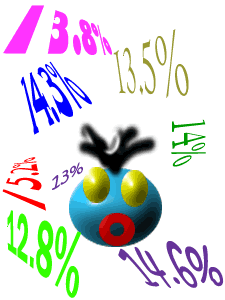 Okay, so we don’t usually treat fine wines like the “punch” bowl at a frat house. (If you do, please click here.) Wine is a serious beverage containing a serious drug. And, unlike prescriptions the pharmacy fills, the size of the “dose” can vary greatly. I feel differently after having a couple of glasses of Napa Cab at 14.6% Alcohol By Volume (ABV) than I feel after a couple of glasses of <13% Pinot Gris. That little extra percentage point or two can sneak up on you hard.
Okay, so we don’t usually treat fine wines like the “punch” bowl at a frat house. (If you do, please click here.) Wine is a serious beverage containing a serious drug. And, unlike prescriptions the pharmacy fills, the size of the “dose” can vary greatly. I feel differently after having a couple of glasses of Napa Cab at 14.6% Alcohol By Volume (ABV) than I feel after a couple of glasses of <13% Pinot Gris. That little extra percentage point or two can sneak up on you hard.
In the March 31 issue of Wine Spectator Magazine, contributing editor Matt Kramer issues what he calls Manifesto 2010. (You’ll need to be either a subscriber of Wine Spectator Online or buy the print magazine to get the full text.) Basically, Mr Kramer’s point is that wineries need to be more forthcoming — a nice way of saying be more honest — with the information they put on wine labels, especially when it comes to ABV percentages.
All those in favor, say “Aye.”
“Aye!”
Opposed?
[sound of crickets chirping]
That is the sound of the wine industry sitting on their hands. Why do some wineries fudge on label ABV percentages?
The first thing one must understand when it comes to the regulation of the wine, and in fact, the whole alcoholic beverage industry, is it is all about taxes. The Feds and the states want to collect excise taxes and all the regulations are written so that the government gets its pound of flesh. Wines lower than 14% ABV are federally taxed at a rate of $1.07 / gal. Wines over 14% are taxed at $1.57 / gal. And they do keep track. Wineries must report monthly their separate inventories of wines above and below the 14% mark. This little 50 cents per gallon difference can equate to a lot of money for a large winery and isn’t chicken feed for us little guys.
HOWEVER, for the final label approval, the federal government allows a leeway of plus or minus 1 percent on wines declared to be above 14% ABV and an even greater leeway of 1.5% on wines declared to be less than 14%. You can see that this leaves A LOT of wiggle room for a winery.
This does not mean that a winery can fudge downward in order to save money on their taxes — at least it shouldn’t. According to my reading of the regulation concerning label approval as it pertains to alcohol content (27 CFR 4.36), the winery is not allowed to fudge past the separations of tax classes (<14%, 14%-21%, 21%-24%). That is, a wine that is really 14.9% ABV can be labeled 14%, but not 13.9%, even though 13.9% is within the 1% range. A 13.9% ABV wine would be a different tax class. Still, being able to say a 14.9% wine is just 14% is potentially a profitable “lie” for a winery. That number 14 is almost magical with a minority, but very vocal minority, of wine collectors. To them, it represents the difference between classic, Old World styled wines and the, as they call them, New World fruit and alcohol bombs. The truth is a wine can be unbalanced at any alcohol level.
Some wiggle room in reported ABV is necessary. Wineries obtain Certificates of Label Approvals (COLA) and print labels often several years in advance of bottling. At Match, we print labels two vintages at a time to get a volume pricing break. Labels are printed for wines that still have months or even a couple of years to sit in the barrel. While in the barrel, wine evaporates. ABV percentage is changing and we must guesstimate what it will be at bottling. I do believe that most wineries can get much closer on their labels than that legally allowed range.
It doesn’t make much economic sense for wineries to change their back labels each year to give exact vintage details to the public. Labels are expensive to change except for vintage date and alcohol class. I do agree with Mr. Kramer that wineries should be more open. However, I think the public’s “thirst” for knowledge can be sated by using our websites better. I’m going to work on that at Match.
The government should just get rid of that 14% dividing line and I don’t just say that because Match Cabernet tends to be above 14%. Heck, charge everyone the higher of the two tax rates. That dividing line is based on winemaking from years ago. Interestingly, if a wine is below 14% ABV, you don’t actually have to state a percentage of ABV on the label. You can just call it “Table Wine”. When these regulations were written, few if any wines were over 14% ABV. Now, it’s more the norm. At least it would be if we were all being honest.
I guess the Feds agree that wineries need to clean up their act when reporting ABV percentages. According to the engrossingly named TTB Circular 2010-1 Alcohol Beverage Sampling Programs Target Advertising, Labeling, and Contents Compliance , the government is going to be concentrating this year on sampling wines off retail shelves to see if the label accurately describes the product.
Are there going to be any surprises?
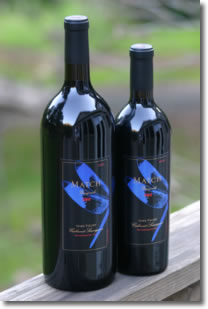 The printer is silent. All mailers have gone to the Post with Follow-Up emails sent. It must be time to make the 2007 Butterdragon Hill Cabernet Sauvignon offer to the public. Visit http://www.matchvineyards.com/order.shtml to learn more.
The printer is silent. All mailers have gone to the Post with Follow-Up emails sent. It must be time to make the 2007 Butterdragon Hill Cabernet Sauvignon offer to the public. Visit http://www.matchvineyards.com/order.shtml to learn more.
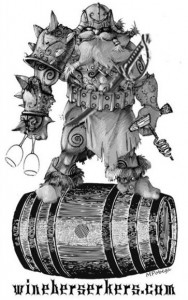 On Wednesday, January 27, we will help Wineberserkers.com celebrate its one year anniversary. Wineberserkers is a fun, friendly, irreverent, highly informative, online community of folks who share a passion for wine. It also has one of the highest numbers of wine industry folks participating. They all, like us, are donating prizes and helping make the 27th a special day for this community of almost 2000 folks who have gone berserk over wine.
On Wednesday, January 27, we will help Wineberserkers.com celebrate its one year anniversary. Wineberserkers is a fun, friendly, irreverent, highly informative, online community of folks who share a passion for wine. It also has one of the highest numbers of wine industry folks participating. They all, like us, are donating prizes and helping make the 27th a special day for this community of almost 2000 folks who have gone berserk over wine.
What is Match Vineyards doing? We are raffling off six magnums of the soon-to-be-released 2007 Butterdragon Hill. To enter this raffle you must be a registered member of WineBerserkers.com AND have made verifiable donation(s) totaling at least $135 (the retail value of the wine) to a charity or charities doing work in earth quake ravaged Haiti. This donation needs to have been made from 1/12/10 through 1/27/10. You also, of course, have to be at least 21 years of age. Complete details of how to enter will be on Wineberserkers.com.
So come on by WineBerserkers right now and join in the community. And on the 27th, it can really pay off.
